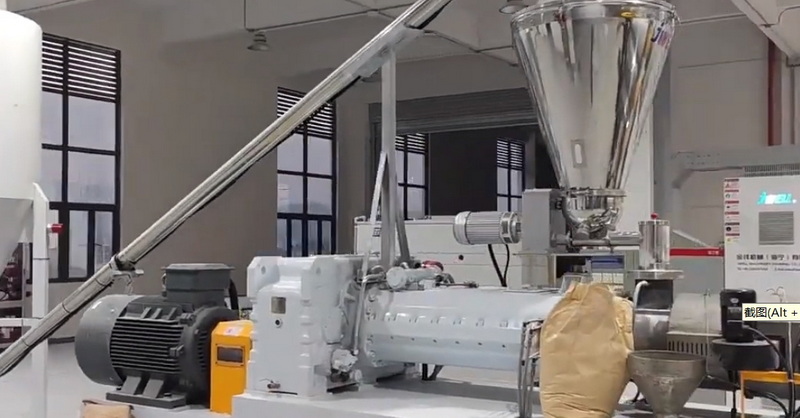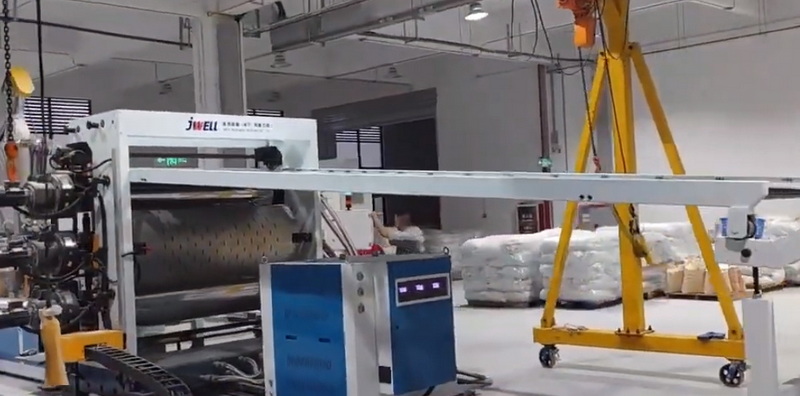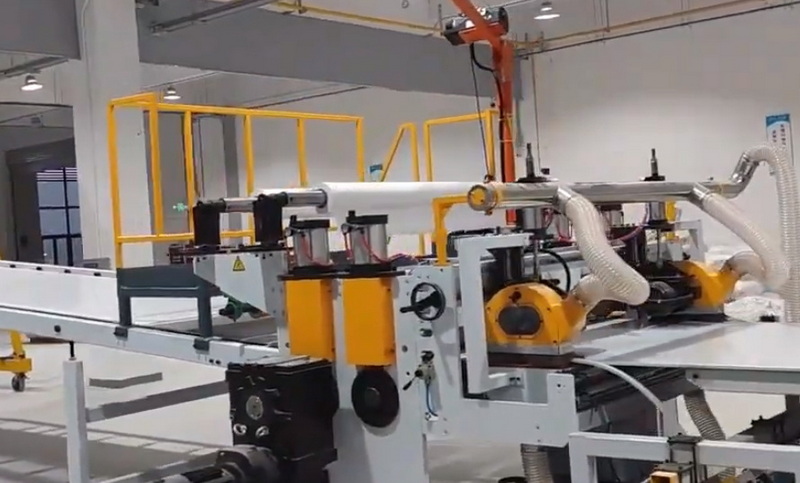Content Menu
● Introduction to Rubber Extrusion
>> Rubber Extrusion Process Overview
● Types of Rubber Extrusion Machines
>> 1. Single Screw Extruders
>> 2. Twin Screw Extruders
>> 3. Pin Barrel Extruders
>> 4. Vacuum Extruders
>> 5. Conical Screw Extruders
● Applications of Rubber Extrusion Equipment
>> Automotive Industry
>> Construction Industry
>> Healthcare Industry
● Benefits of Rubber Extrusion Equipment
● Advances in Rubber Extrusion Technology
● Environmental Considerations
● Conclusion
● FAQ
>> 1. What are the main types of rubber extrusion machines?
>> 2. What is the role of rubber extrusion equipment in the automotive industry?
>> 3. How does a vacuum extruder improve rubber extrusion quality?
>> 4. What are the benefits of using twin screw extruders?
>> 5. What is the significance of material selection in the rubber extrusion process?
Rubber extrusion machines are crucial in the production of various rubber products, including tires, hoses, belts, and more. These machines utilize the process of extrusion to shape raw rubber compounds into continuous profiles with precise cross-sections. In this article, we will delve into the different types of rubber extrusion machines, their applications, and the benefits they offer.

Introduction to Rubber Extrusion
Rubber extrusion is a manufacturing process where rubber material is heated and forced through a die to create continuous shapes or profiles. This technique is widely used across industries such as automotive, construction, and healthcare for producing components like seals, gaskets, and tubing.
Rubber Extrusion Process Overview
The rubber extrusion process involves several key stages:
1. Material Selection: Choosing the appropriate rubber material based on the product's intended use. This includes natural rubber, synthetic rubber, and blends, each with unique properties such as elasticity, durability, and resistance to chemicals or heat.
2. Extrusion: Heating and forcing the rubber through a die to shape it into continuous profiles. The die is designed to match the desired cross-sectional shape of the final product.
3. Cooling and Cutting: Cooling the extruded rubber to solidify its form and cutting it to the desired length. Cooling can be achieved through air, water, or a combination of both.
Types of Rubber Extrusion Machines
There are several types of rubber extrusion machines, each designed for specific applications and offering unique benefits.
1. Single Screw Extruders
Single screw extruders are one of the most common types used in the rubber industry. They consist of a single rotating screw within a barrel that compresses and melts the rubber material. These machines are known for their simplicity, ease of operation, and cost-effectiveness. They are suitable for producing simple rubber profiles and are often used for high-volume production.
2. Twin Screw Extruders
Twin screw extruders feature two parallel screws rotating in opposite directions, offering improved mixing and precise temperature control. They are ideal for complex formulations and heat-sensitive materials, ensuring uniform dispersion of additives. This makes them suitable for producing high-quality rubber compounds with precise specifications.
3. Pin Barrel Extruders
Pin barrel extruders are a type of twin screw extruder equipped with pins inside the barrel. These pins provide additional shear and mixing, enhancing the dispersion of fillers and additives in the rubber compound. They are particularly effective for processing rubber compounds with high filler loadings, which are common in industrial applications.
4. Vacuum Extruders
Vacuum extruders incorporate a vacuum system to remove air and trapped gases from the rubber material during the extrusion process. This helps achieve more uniform and defect-free extrudates, making them suitable for high-quality rubber profiles, hoses, and tubing. The vacuum system ensures that the final product has fewer voids and bubbles, improving its overall quality and durability.
5. Conical Screw Extruders
Conical screw extruders are used for low-viscosity materials and facilitate the transport and packaging of rubber. They are particularly effective in producing small diameter profiles and tubes where precision is essential. These machines are often used in applications requiring high accuracy and minimal material waste.

Applications of Rubber Extrusion Equipment
Rubber extrusion equipment is versatile and used across various industries for producing a wide range of products.
Automotive Industry
In the automotive sector, rubber extrusion is used to manufacture components such as seals, gaskets, and vibration-damping parts. These components are crucial for ensuring the durability and performance of vehicles. For example, rubber seals help prevent leaks in engines and transmissions, while vibration-damping parts improve ride comfort and reduce noise.
Construction Industry
The construction industry utilizes rubber extrusion for producing weather seals, door seals, and other protective components. These products help in maintaining building integrity and preventing weather-related damage. Rubber seals around doors and windows prevent air leaks and moisture entry, improving energy efficiency and extending the lifespan of buildings.
Healthcare Industry
In healthcare, rubber extrusion is used to create medical tubing, seals, and other components that require high precision and sterility. These products must meet stringent quality standards to ensure patient safety and prevent contamination. Medical tubing, for instance, is used in medical devices and equipment, requiring precise dimensions and material properties.
Benefits of Rubber Extrusion Equipment
Rubber extrusion equipment offers several benefits, including:
- Efficiency: High output at lower temperatures, which reduces energy consumption and increases productivity.
- Versatility: Wide product range suitable for various applications across different industries.
- Reliability: Robust design with replaceable hardened liners, ensuring long machine life and minimal downtime.
- Customization: Options for customized modifications based on specific requirements, allowing manufacturers to tailor their production lines to meet unique product specifications.
Advances in Rubber Extrusion Technology
Recent advancements in rubber extrusion technology have focused on improving efficiency, reducing waste, and enhancing product quality. This includes the development of more sophisticated control systems that allow for precise temperature control and real-time monitoring of the extrusion process. Additionally, advancements in material science have led to the creation of new rubber compounds with improved properties, such as increased durability and resistance to environmental factors.
Environmental Considerations
The rubber extrusion industry is also focusing on environmental sustainability by reducing waste and energy consumption. This includes the use of recycled rubber materials and the implementation of energy-efficient machinery. Manufacturers are increasingly adopting green technologies to minimize their environmental footprint while maintaining production efficiency.
Conclusion
Rubber extrusion machines are essential for manufacturing a variety of rubber products across different industries. Understanding the types of rubber extrusion machines and their applications can help manufacturers optimize their production processes and meet specific industry demands. As technology continues to evolve, we can expect even more efficient and sustainable rubber extrusion equipment in the future.

FAQ
1. What are the main types of rubber extrusion machines?
The main types include single screw extruders, twin screw extruders, pin barrel extruders, vacuum extruders, and conical screw extruders.
2. What is the role of rubber extrusion equipment in the automotive industry?
Rubber extrusion equipment is used to produce seals, gaskets, and vibration-damping parts that are crucial for vehicle performance and durability.
3. How does a vacuum extruder improve rubber extrusion quality?
A vacuum extruder removes air and trapped gases from the rubber material, resulting in more uniform and defect-free extrudates.
4. What are the benefits of using twin screw extruders?
Twin screw extruders offer improved mixing and precise temperature control, making them ideal for complex formulations and heat-sensitive materials.
5. What is the significance of material selection in the rubber extrusion process?
Material selection is crucial as different rubber materials have unique properties that affect the final product's performance and durability.






















